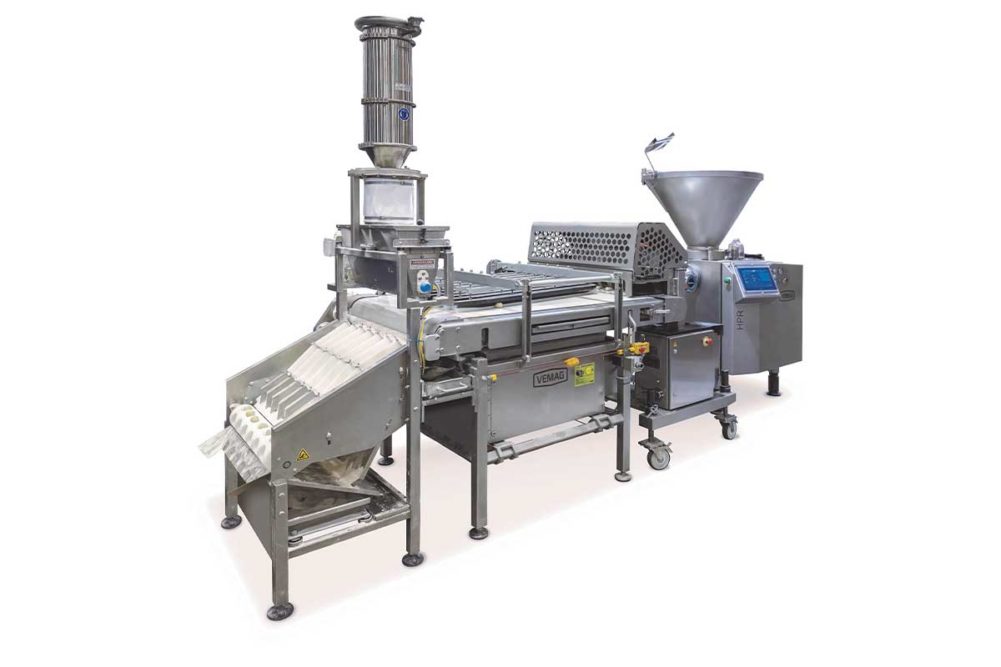Tortilla producers need the right equipment to maintain or increase throughput while ensuring quality. Success on hot-press lines starts with accurate scaling. John McIsaac, vice president of strategic business development, Reiser, said one of the biggest mistakes he sees manufacturers making is not keeping up with the latest technology.
“There have been advances in dividing and rounding technology that can greatly improve line performance,” he said. “We have spent a huge amount of effort on Vemag equipment to divide and round tortilla dough.”
The price of ingredients has made minimizing giveaway an even bigger priority these days.
“One of the big advantages for Handtmann’s machines is our accuracy,” said Ken Hagedorn, vice president, bakery sector, Handtmann. “On a normal-sized piece, we’re going to be off plus or minus a gram, so we’re very accurate. Twenty years ago, flour was cheap; everything was cheap, so most people didn’t care about that, but now it’s not that way anymore. Weight control has become really important.”
It’s vital that producers get the proper equipment for the products they’re making. Cheaper is not always better.
“Low-cost equipment will end up costing more in maintenance and lower production than high-quality equipment,” said Daniel Habel, application engineer, AMF Bakery Systems.
He added that the more integrated the equipment, the better the communications will be between machines, leading to a smooth process.
Mr. Hagedorn said that one of the mistakes he sees producers making is to push their machinery beyond its capacity.
“With tortillas so cheap, how are they going to make more money? They’ve got to go faster,” he said. “When they start to push that envelope, now you’re pushing the envelope on the oven, now you’re pushing the envelope on the sheeting line or the press system. Now your maintenance becomes even more critical because you’re going beyond what the machine is guaranteed to do.”
Oven capacity can be one of the most restrictive parts of increasing throughput. That’s because flatbreads typically bake in a three-pass oven, not a tunnel oven.
“Most of the ovens you see at tortilla manufacturers aren’t that big,” Mr. Hagedorn said. “There’s nothing you can do on the front end once your oven is fixed. It’s a matter of somebody deciding they need a bigger oven to give them more capacity. You can’t just say, ‘OK, I’m going to extend that oven.’ You can’t do it. It’s a matter of the oven becoming the restricting factor.”
One of the efficiencies that bakers are seeking is an easy washdown solution.
“We get a lot of questions around sanitary design,” said David Moline, vice president of sales and marketing for Moline Machinery. “We specialize in USDA sheeting systems where daily sanitation is required. That’s what we really focus on: USDA bakeries and catering to USDA bakeries for making tortillas and flatbreads and things like that for prepared foods. That equipment is capable of daily rigorous washdown requirements.”
Mr. Hagedorn said cleanability is one of the top questions he gets from tortilla and flatbread makers.
“Ours is a USDA washdown machine built that way so we can do changeovers from one dough to the next in 10 minutes or even 5 minutes,” he said. “It’s very easy to go from one dough to the next, to do that changeover.”
For producers who cut tortillas into chips, automating the full process can earn dividends for those wanting to increase speeds, said Sergio Caballero, sales manager, FoodTools.
“Most of our customers start by adding a machine to cut tortilla chips from rounds,” he said. “This improves accuracy and portioning speed, but next-step bottlenecks end up being stacking, loading, offloading or packaging. Tortilla facilities may stop with automating the slicing step, but industry leading tortilla manufacturers continue automating additional bottlenecks to attain higher speeds and efficiencies on a tortilla chip line.”
This article is an excerpt from the July 2023 issue of Baking & Snack. To read the entire feature on Flatbreads & Tortillas, click here.





